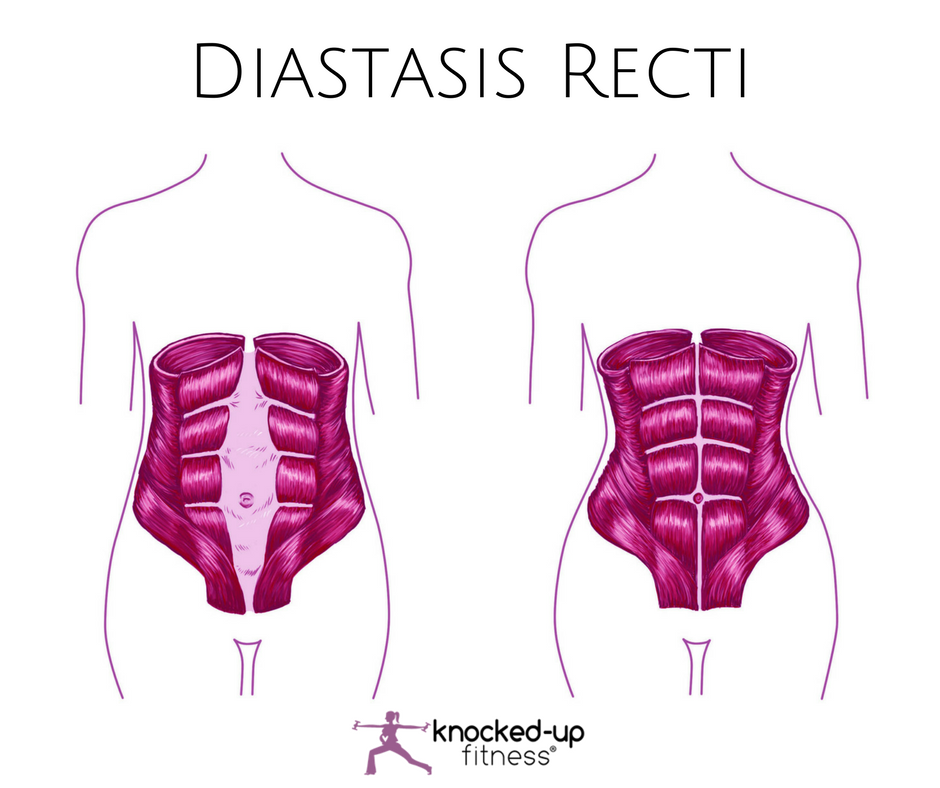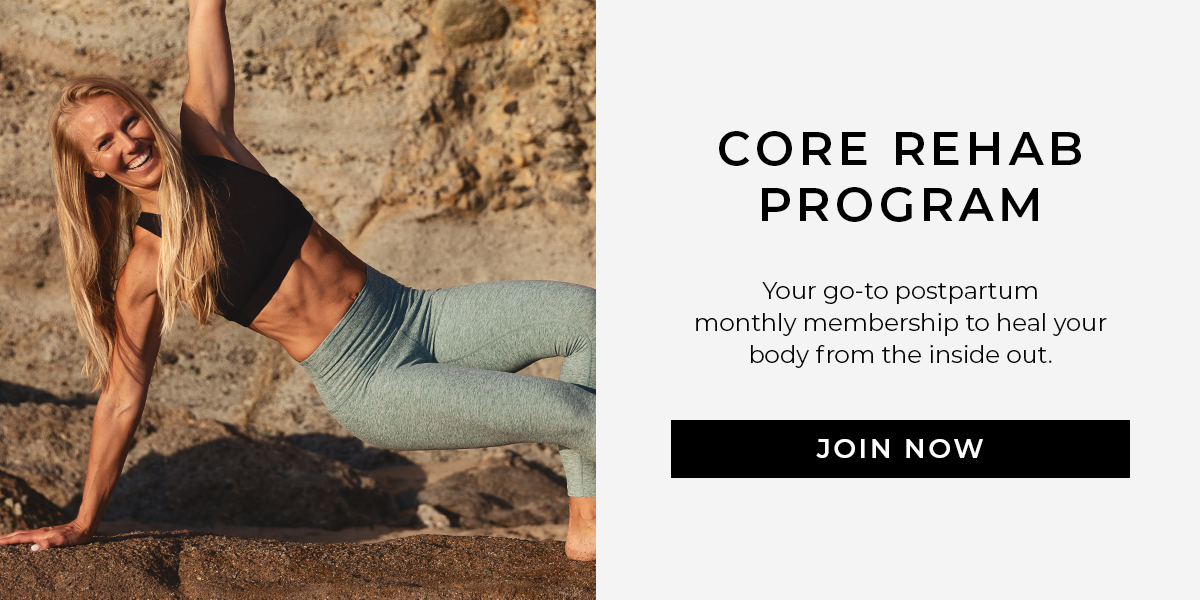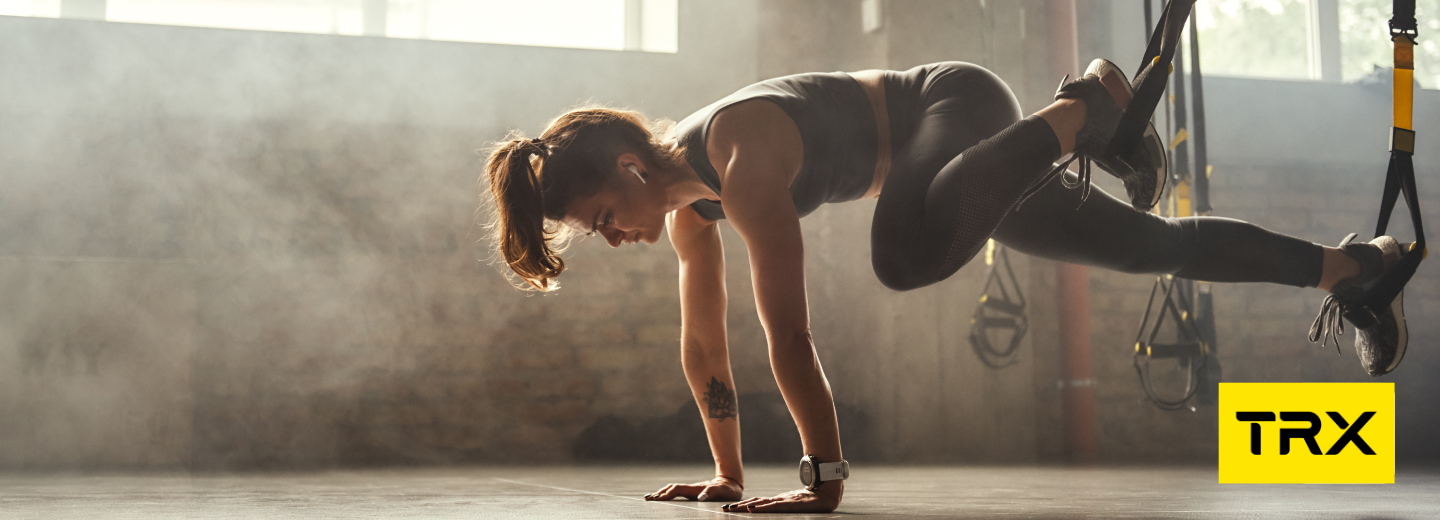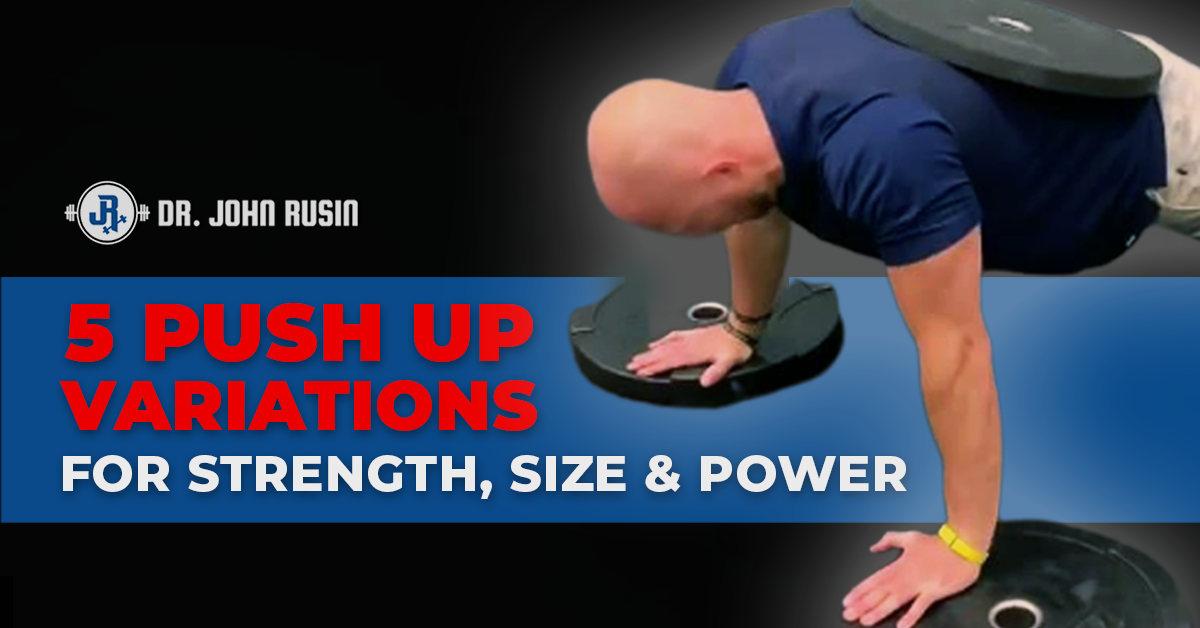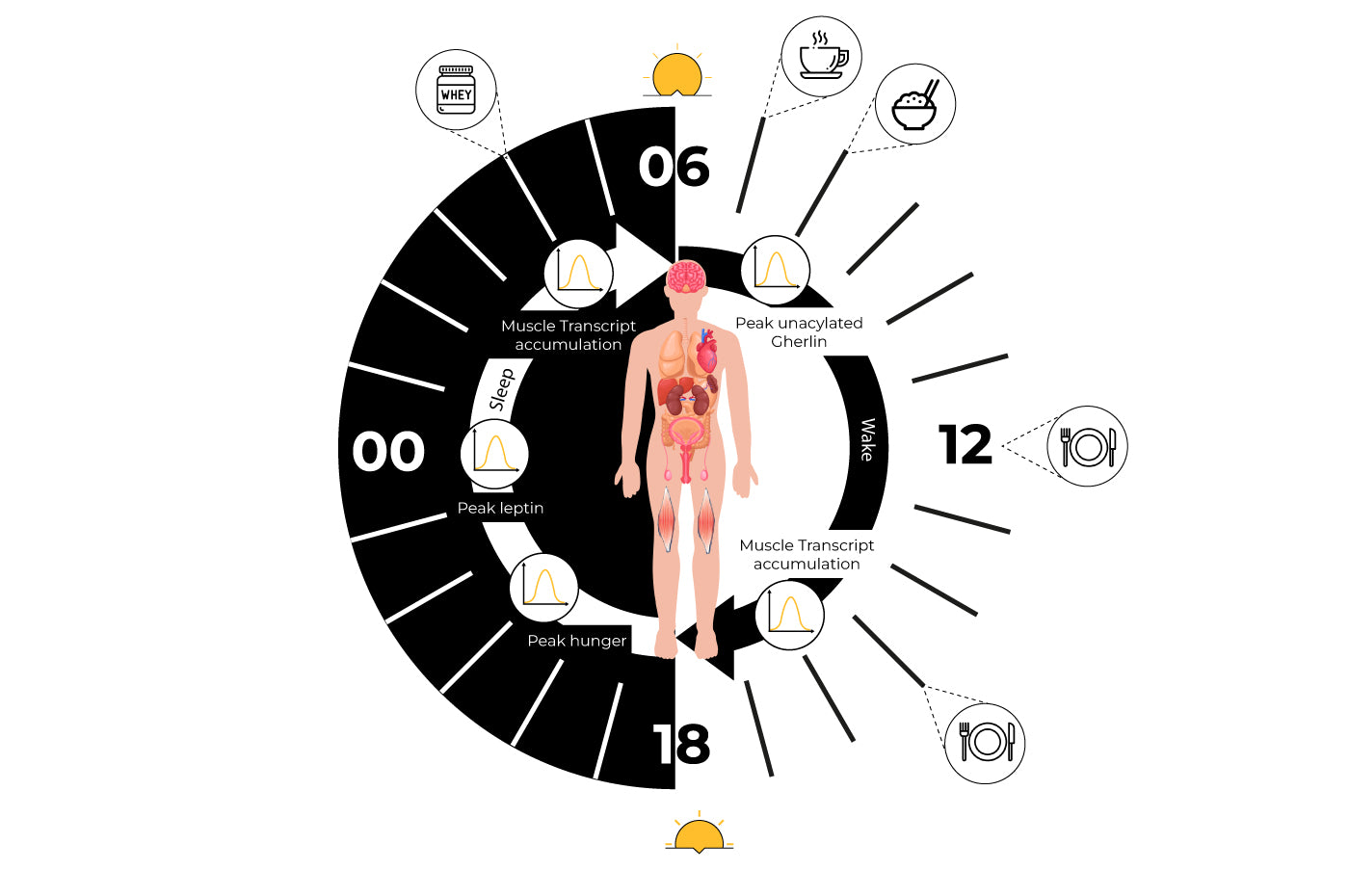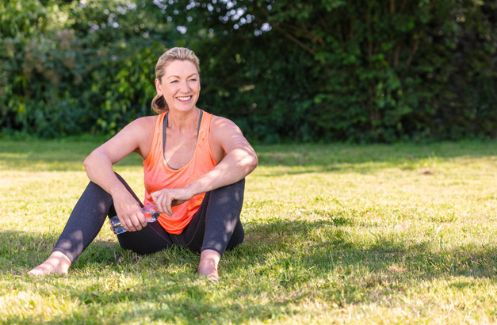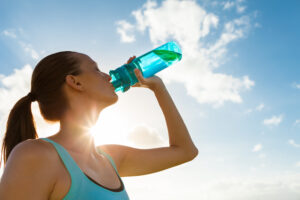share
tweet
share
 As any seasoned lifter will attest, the moment you stop adding more weights to the bar is the moment your calves will begin to deflate and your sense of manhood will begin to plummet.
As any seasoned lifter will attest, the moment you stop adding more weights to the bar is the moment your calves will begin to deflate and your sense of manhood will begin to plummet.
So what’s the solution?
Triple up on protein powder whilst aggressively activating ‘mind muscle connection’ during insentient sessions on xHamster?
Ditch the iron forever, become a foreign nomad whilst spouting the ‘holistic benefits’ of mushroom coffee as an alternative to a pre-workout?
Fortunately, none of the above.
In fact, if you’re wanting to get bigger and stronger in a short space of time, the most reliable way is to lift more weights with maximum intensity.
In this post, we’ll be covering a system so simple and basic it’s almost laughable. However, the results speak for themselves.
This workout was propagated by Dorian Yates during the early 1990’s who took the bodybuilding world by storm with his formidable size and strength that birthed a new era of ‘mass monsters’.
But first… let’s learn more about the man himself.
Who is Dorian Yates?
 Dorian Yates is a former professional bodybuilder who was born on 19 April 1962 in Birmingham, England.
Dorian Yates is a former professional bodybuilder who was born on 19 April 1962 in Birmingham, England.
Yates won the coveted Mr. Olympia title six consecutive times in his career from 1992 to 1997 and currently has the fifth-highest number of wins of the competition behind Lee Haney, Ronnie Coleman, Arnold Schwarzenegger and Phil Heath.
As such:
He is often regarded as one of the greatest bodybuilders of all time earning the nicknames ‘The Game Changer’ and ‘The First Mass Monster’ due to his relentless work ethic, self-discipline and methodical approach to fitness and nutrition that weren’t very popular during his era.
As well as this,
Yates had a tendency to neither confirm nor deny whether he would competitively compete beforehand and spend most of his time between contests out of the public eye, later earning the nickname ‘The Shadow’.
Unlike most of his Californian-based competitors, Yates was known for not taking a single day off in 12 years.
He would simply train at Temple Gym in Birmingham, known as ‘The Dungeon’ for no more than 4 times a week, preparing his meals, calculating his nutritional intake, analysing his training results through his log book and resting.
In essence,
He lived and breathed bodybuilding through and through.
Yates later popularised the principles of high intensity training, which has its roots in Arthur Jones’ HIT system and Mike Mentzer’s Heavy Duty system that revolved around performing multiple and single-joint exercises consisting of no more than 1 or 2 sets to complete failure.
He named this training program ‘Blood and Guts’ due to the extreme lengths one must go to achieve 100% failure and maximum intensity.
It has also made those who dare to try this routine puke during training, but there’s no denying performing Dorian Yates’ workout will mold a champion in the long-run.
So:
Get a sick bucket at the ready – shit’s about to get real.
Overview
Dorian Yates’ Blood and Guts workout is a 6 week training plan designed to increase muscle mass and overall strength.
Through ‘high-intensity training’ (HIT), not to be confused with high-intensity interval training (HIIT), the Blood and Guts workout goes against today’s normal convention of stimulating muscle growth through volume, instead focusing on intensity and overall muscular failure.
As such:
This mass routine was created to stimulate new pathways of extreme growth using only two warm-up sets and one working set performed to maximum exertion with assistance from a training partner.
It consists of 4 workouts over 6 days with 2 consecutive training days and 1 day off.
The training plan is split into the following:
- Chest and Biceps
- Back
- Deltoids and Triceps
- Legs
In case you haven’t put two and two together yet, this routine is purely for advanced lifters with years of lifting experience.
The requirement to bust your balls on your one and only working set, going to failure and forcing out extra reps with the help of a training partner is not for the feint of heart.
However,
If this is something you want to give a go, bare in mind that this plan should only be used as a short-term change to your normal training program and should not be performed for longer than 6 weeks at a time.
Dorian Yates Workout: Blood & Guts
Day 1 – Chest and Biceps
| Exercise | Sets | Reps |
|---|---|---|
| Rotator Cuff Warm Up | 2 | 12 |
| Decline Barbell Bench Press (Warm Up) | 2 | 10 – 12 |
| Decline Barbell Bench Press (Working Set) | 1 | 6 – 8 |
| Incline Dumbbell Bench Press (Warm Up) | 1 | 10 – 12 |
| Incline Dumbbell Bench Press (Working Set) | 1 | 6 – 8 |
| Dumbbell Flies (Warm Up) | 1 | 10 – 12 |
| Dumbbell Flies (Working Set) | 1 | 6 – 8 |
| Dumbbell Concentration Curl (Warm Up) | 1 | 10 – 12 |
| Dumbbell Concentration Curl (Working Set) | 1 | 6 – 8 |
| Barbell Curls (Working Set) | 1 | 6 – 8 |
Day 2 – Back
| Exercise | Sets | Reps |
|---|---|---|
| Dumbbell Pullovers (Warm Up) | 2 | 10 – 12 |
| Dumbbell Pullovers (Working Set) | 1 | 8 – 10 |
| V-Bar Pulldown (Warm Up) | 1 | 10 – 12 |
| V-Bar Pulldown (Working Set) | 1 | 8 – 10 |
| Dumbbell Rows (Warm Up) | 1 | 10 – 12 |
| Dumbbell Rows (Working Set) | 1 | 8 – 10 |
| Wide-Grip Rows (Warm Up) | 1 | 10 – 12 |
| Wide-Grip Rows (Working Set) | 1 | 8 – 10 |
| Deadlifts (Warm Up) | 1 | 10 – 12 |
| Deadlifts (Working Set) | 1 | 8 – 10 |
Day 3 – Deltoids and Triceps
| Exercise | Sets | Reps |
|---|---|---|
| Dumbbell Shoulder Press (Warm Up Set) | 2 | 10 – 12 |
| Dumbbell Shoulder Press (Warm Up) | 1 | 8 – 10 |
| Dumbbell Shoulder Press (Working Set) | 1 | 6 – 8 |
| Side Lateral Raises (Warm Up) | 1 | 10 – 12 |
| Side Lateral Raises (Working Set) | 1 | 8 – 10 |
| Cable Lateral Raises (Working Set) | 1 | 6 – 8 |
| Cable Pushdown (Warm Up) | 1 | 10 – 12 |
| Cable Pushdown (Working Set) | 1 | 8 – 10 |
| Skull Crushers (Warm Up) | 1 | 10 – 12 |
| Skull Crushers (Working Set) | 1 | 8 – 10 |
| Seated Triceps Press (Warm Up) | 1 | 10 – 12 |
| Seated Triceps Press (Working Set) | 1 | 8 – 10 |
Day 4 – Legs
| Exercise | Sets | Reps |
|---|---|---|
| Leg Extensions (Warm Up Set) | 1 | 15 |
| Leg Extensions (Warm Up Set) | 1 | 10 – 12 |
| Leg Extensions (Working Set) | 1 | 10 – 12 |
| Leg Press (Warm Up) | 2 | 10 – 12 |
| Leg Press (Working Set) | 1 | 10 – 12 |
| Hack Squat (Warm Up) | 2 | 10 – 12 |
| Hack Squat (Working Set) | 1 | 10 – 12 |
| Leg Curls (Warm Up) | 1 | 10 – 12 |
| Leg Curls (Working Set) | 1 | 10 – 12 |
| Stiff-Legged Deadlift (Warm Up) | 1 | 10 – 12 |
| Stiff-Legged Deadlift (Working Set) | 1 | 10 – 12 |
| Calf Press (Working Set) | 1 | 10 – 12 |
| Calf Press (Working Set to include Rest Pause) | 3 | Failure |
| Seated Calf Raises (Warm Up) | 1 | 10 – 12 |
| Seated Calf Raises (Working Set) | 1 | 6 – 8 |
Examination
The Blood and Guts routine does a great job of targeting all of your primary muscle groups across 6 days with a mixture of single-joint exercises (barbell curls, cable lateral raises etc) and multi-joint exercises (hack squats, deadlifts, dumbbell bench press etc).
You will be performing between 5 – 7 exercises during each workout which is a great variety of movement to be able to stimulate muscle growth from varying angles.
If that wasn’t enough:
What makes this routine particularly effective is the ability to train with a training partner.
Ideally,
Your training partner should push you beyond your limit and hold you accountable during every set and rep.
No one likes a half-arser, and you should avoid any self-doubt and negative self-talk going into a workout to ensure you’re in the right frame of mind to push yourself to absolute failure.
However:
It’s worth highlighting that whilst training frequency plays a big role in muscle growth, the lack of training frequency of each muscle group in this routine is the only minor negative to pick out.
You’re only required to train each muscle group once a week which probably isn’t the best use of your time if you’re able to get to the gym 5 or 6 days a week.
Of course, what Blood and Guts lacks in volume and frequency, it makes up with through intensity.
Whilst the level of intensity does play a big role in being able to recover from each work out efficiently, it could be a bit more optimised for the every day gym goer.
It’s no secret that Dorian Yates was on a heroic amount of gear in his prime and arguably such a programme suited his lifestyle and goals better than most as he would always able to recover a lot faster and return to the gym in a shorter amount of time, therefore benefiting from frequency of training.
Notes
Cycle
The Blood and Guts workout is performed with 4 workouts across a 6 day working week over a 6 week cycle.
As mentioned earlier,
This is usually performed with 2 days on and 1 day off which is to be repeated throughout the week.
For example:
· Monday – Chest and Biceps
· Tuesday – Back
· Wednesday – Rest
· Thursday – Deltoids and Triceps
· Friday – Legs
· Saturday – Rest
However,
Due to the amount of intensity included in this plan, it’s likely your body will need a few more days to recover from the initial stress and shock placed on your central nervous system.
Therefore, it is important to be flexible with your recovery.
If you need more days to recuperate, it’s perfectly fine to extend the working week over 7 or 8 days instead.
Just always ensure you are listening to your body as this reduces the likelihood of incurring injuries.
Duration
Performing a workout from the Blood and Guts program should last no longer than 45 – 60 minutes at a time.
This is due to the low volume, high intensity included with rest times being kept to no longer than 1 minute between each set.
Progression
Yates is famous for having always kept tabs on his progress through journaling.
Whether it was understanding what he was eating each day, how much he weighed or just how strong he was getting, Yates would always keep a log book of how he was moving towards his goals.
He believed in setting achievable, short-term goals (such as gaining 2lbs of body mass each month). Which, over the course of a year, equals to 24lbs (10kg) of muscle mass.
Aside from having short-term goals, it’s also important to have achievable long-term goals.
For instance,
If you’d like to be able to bench press an additional 60lbs (30kg) by the end of the year, you can work backwards by progressively adding 5lbs (2.5kg) to your bench press each month for 12 months.
In order to avoid plateauing on this routine, it is advisable to keep adding incremental weights to the bar each week to promote muscle growth.
However,
The only way to accurately do this is to know how much you lifted the week prior.
Therefore:
It is recommended to keep a log book with you during your workouts and to track how much you have lifted each week.
By writing down your goals and progress, you’ll be better motivated to keep beating your last workout as well as seeing how far you have come and how close you are to reaching your short and long-term goals.
Training Partners
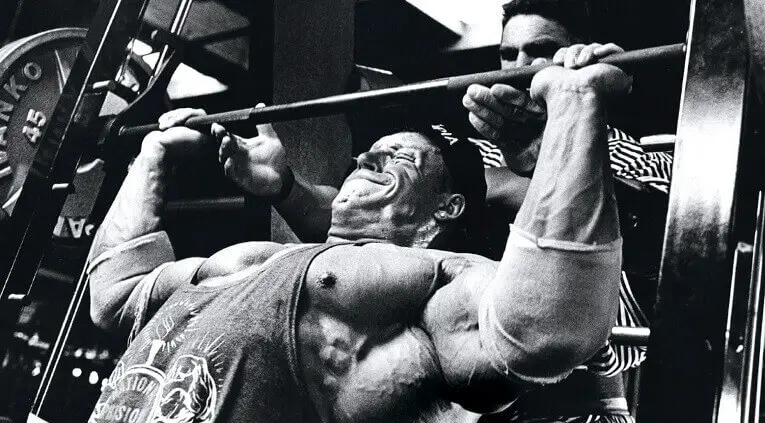 As Dorian’s Yates workout requires you to train to failure, he advises training with someone who can assist you whilst you reach failure to ensure your overall safety.
As Dorian’s Yates workout requires you to train to failure, he advises training with someone who can assist you whilst you reach failure to ensure your overall safety.
Additionally,
If your training partner has the same goals as you, you’ll be in a good place to constantly drive and motivate each other.
At the very least, if you don’t have a training partner, getting a spotter during your lifts will help you hit failure in a controlled manner.
It goes without saying:
If you’re working without a spotter or training partner, you put yourself at greater risk of injury due to the level of intensity involved in this training program so make sure someone is on hand at all times in case things go tits up.
Extra Negatives
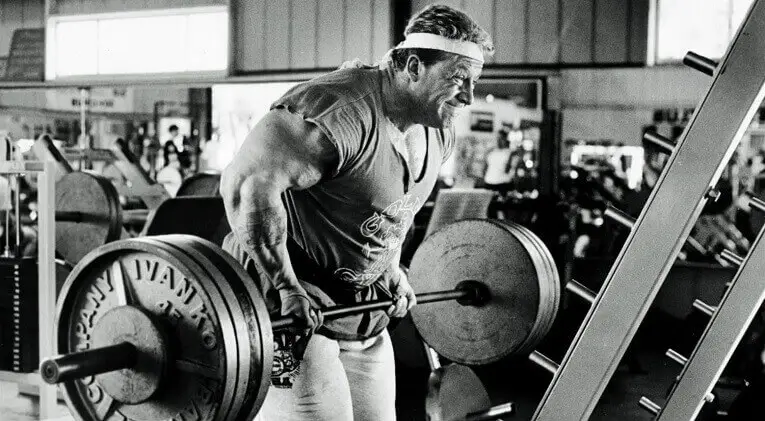 There are 3 phases of a lift that you will go through: the positive (shortening of the muscle), the static (holding of the muscle) and the negative (lengthening of the muscle).
There are 3 phases of a lift that you will go through: the positive (shortening of the muscle), the static (holding of the muscle) and the negative (lengthening of the muscle).
Yates reasons that most people will often focus on the positive phase of a lift (e.g. lifting a barbell below your chin during bicep curls where the muscles shorten) whilst lowering the weight back down with no control to its starting position.
By doing so,
You’ll miss performing the other half of the rep (i.e. where the muscle lengthens), known as the negative which causes greater muscle breakdown.
Consequently:
If more emphasis is placed on lengthening muscle contraction, you’ll open yourself up to more possibilities of muscle growth.
This is because if you’ve gone to failure on the positive phase of a lift, you’ll often have more left in the tank to perform negatives and therefore you haven’t gone to ‘true’ failure.
Yates recommends performing additional negative reps at the end of your working set with the aid of a training partner.
With the support of your training partner, bring the weight up to the positive phase of the lift and slowly control the weight through the negative phase until you can no longer perform the rep with good technique.
By doing this, you’ll be able to make certain that you have completely depleted every area of the rep and would’ve truly passed your limits.
Cardio
During off-season (i.e. if/when you’re not competing on stage), Yates recommends performing a moderate amount of cardio for overall conditioning.
He prescribes doing 25 – 30 minutes of cardio at a moderate pace at least 3 times a week.
This also has the added benefit of helping with recovery after your workout as it promotes greater blood flow throughout your system and removes waste products.
Preferably,
Cardio should be done on separate days to your weight training as Yates argues performing cardio and weight training on the same day interferes with muscle recovery and can adversely affects your strength gains.
Recovery
As the Blood and Guts workout is a high intensity training plan, it is important to rest and recover as effectively as possible.
Aim for at least 7 – 9 hours of solid kip each night to avoid feeling run down and burnt out.
Diet
Yates advises to keep your diet and nutrition fairly basic.
It should be made up of whole-based foods derived mainly from animal sources, complex carbohydrates and high-quality fats.
This includes: chicken breast, turkey breast, white fish, steak, eggs, oatmeal, brown rice, sweet potatoes, vegetables and a few tablespoons of omega fatty acids each day.
As this program is designed to put on muscle in a short amount of time, Yates recommends consuming at least 1.5g of protein per pound of body weight daily.
For example,
If you weigh 200lbs (90kg), you should be aiming to eat at least 300g of protein each day.
For carbohydrates, Yates recommends taking whatever your protein intake is per day and multiplying that by 1.5 – 2.
So, using the example of 300g of protein, this would equate to 450g – 600g of carbohydates.
Ideally,
You should be consuming 5 or 6 separate meals throughout the day in order to give your body enough time to absorb as much nutrients as possible.
There’s no use trying to gulf down 300g of protein and 450g – 600g of carbohydrates in a small eating window as you’ll only be letting it pass through your system, as opposed to effectively digesting it.
Not to mention:
Your toilet will absolutely hate you for it.
Whilst the above example requires a lot of calorie consumption, it’s important to realise that even for Dorian Yates, trying to eat 300g of protein and 450g – 600g of carbohydrates daily for muscle growth is simply unfeasible given how busy one’s life can get.
Therefore,
It’s advisable to include some form of supplementation in order to help you hit your daily requirements.
Yates’ supplement schedule would normally be as follows:
Early morning:
- Protein shake with a banana (to be consumed a few hours after breakfast)
Pre-workout (30 minutes before):
Post-workout):
- Fast digesting protein supplement (e.g. whey protein isolate)
- Simple sugars (e.g. dextrose, sucralose)
Once you get the insulin spike from the simple sugars, this will elevate your blood pressure and push the nutrients you’ve just consumed into the muscles after they have been depleted from the workout for maximum recovery,
Yates then recommends following up with some glutamine or creatine as this will increase their absorption rate.
Thoughts
Dorian Yates’ Blood and Guts workout is a great program to follow for the advanced lifter.
Whilst there’s nothing particularly fancy about this routine, 6 weeks of high-intensity training will test you both physically and mentally.
With that said:
If your typical workout is essentially an hour of scrolling through Instagram with a few bicep curls and selfies thrown in for good measure, then you’re in for a rude awakening.
A few training sessions from this program will make you quickly realise Dorian Yates was an absolutely sadistic human.
However, the beauty of the Blood and Guts workout is being able to go through hell and back with a training partner.
Having a good training partner to push you will make all the difference in terms of experiencing muscular growth and increased strength.
It goes without saying,
Your training partner should provide very little assistance when performing your one working set.
Instead, they should be by your side to stop you from killing yourself and to check that you are performing the exercise safely and not completing the reps for you.
After performing this routine for 4 weeks, I noticed considerable differences in my strength level.
For instance, my incline dumbbell bench press increased by 29% from 28kg to 36kg, my dumbbell rows increased by 24% from 34kg to 42kg and my leg press increased by 28% from 250kg to 320kg to name but a few.
In order to get bigger, you must also get stronger and the Blood and Guts workout is designed to make you stronger in all areas of your physique.
In terms of size, whilst I did experience increased muscle mass performing this routine for 6 weeks, it wasn’t as much as I would’ve expected.
Going flat out and full intensity for 6 weeks and with protein consumption prioritised above all else, I only experienced an additional 3kg of muscle mass (up from 80kg when I first started).
Perhaps my expectations where slightly unrealistic as I was aiming to achieve at least 5kg of additional muscle mass in that time.
Nevertheless,
This routine was performed completely drug-free so it’s important to bear in mind that growth and size will come, albeit at a slower pace if you are looking to perform the Blood and Guts routine naturally.
However, there is no denying that consistency and frequency of training are key in all aspects of this program to achieve phenomenal results.
Conclusion
All-in-all
Dorian Yates’ Blood and Guts workout is a tried and tested mass-building program designed for fast results through the application of maximum intensity.
Whilst this plan isn’t for the feint hearted, the rewards far outstrip the pain and struggle to get there with the support of a good quality training partner who will push you past your usual comfort zone.
And like with all things in life, magic begins outside of your comfort zone.
However,
It’s important not to be too hard on yourself and listen to your body at all times, as you will encounter days where your body just simply says: NO.
With this in mind,
It’s important to reiterate that lifting weights does not make you big and strong; recovering from lifting weights makes you big and strong.
Thus,
Make sure you’re getting in enough calories, using Dorian Yates’ rules for protein, carbohydrate and fat consumption to fuel growth, and that you’re getting at least eight hours of interrupted sleep every night for optimal recovery.
Keeping both of these in check will go a long way in sustaining your motivation and enthusiasm following each workout over the next 6 weeks.
Over To You
Thinking of giving Dorian Yates’ Blood and Guts workout a spin?
Any comments or questions about this routine?
Let me know in the comments section below!

Joseph is the Founder and Editor in Chief of CheckMeowt. When he is not sat at the computer guzzling down the nearest thing with protein in it, he can be found pulling up the world in the gym. Occasionally, he is best described as socially unreliable and easily distracte.

